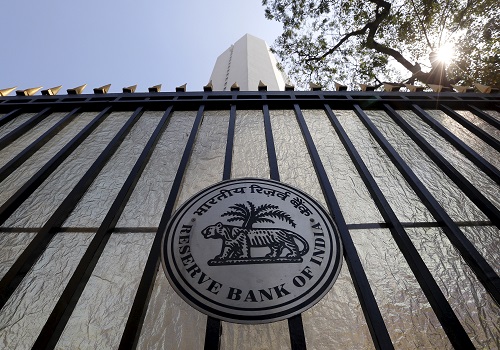Turmeric trading range for the day is 14090-14870 - Kedia Advisory

Follow us Now on Telegram ! Get daily 10 - 12 important updates on Business, Finance and Investment. Join our Telegram Channel
Gold
Gold prices experienced a decline of -0.98% to settle at 61117 as investors adopted a cautious stance ahead of monetary policy decisions from major central banks this week. The prospect of interest rate reductions early next year may be challenged by central banks such as the Fed, ECB, and BoE, as labor markets show resilience to high-interest rates despite receding inflationary pressures. In November, the U.S. economy added nearly 200,000 jobs, surpassing market expectations, and the unemployment rate unexpectedly decreased. This positive economic data, along with the upcoming U.S. inflation figures, is influencing investor sentiment and their expectations regarding interest rates. Physical gold dealers in India increased discounts to seven-month highs to attract customers as record local prices dampened demand. In China, premiums slipped, reflecting the impact of peak global spot prices. Hong Kong dealers sold bullion at varying rates, and in Singapore, premiums remained relatively stable. Technically, the market is undergoing long liquidation, with a 2.25% drop in open interest, settling at 14,915. Gold has support at 60860, with a potential test of 60600, while resistance is likely at 61620, with a move above potentially leading to testing 62120. Investors should closely monitor central bank decisions, U.S. inflation data, and global economic conditions, as these factors will continue to influence gold prices in the short term.
Trading Ideas:
* Gold trading range for the day is 60600-62120.
* Gold fell as investors turned cautious ahead of monetary policy decisions from major central banks this week.
* Labor markets are demonstrating more resilience than initially anticipated to high-interest rates.
* Data from November showed that nearly 200 thousand jobs were added to the US economy
Silver
Silver prices declined by -0.9% to settle at 71864, influenced by a stronger U.S. dollar. Investors are closely watching several major central bank meetings and U.S. inflation data for insights into the future interest rate trajectory. The U.S. economy added nearly 200,000 jobs in November, surpassing expectations, and the unemployment rate unexpectedly decreased, with wages continuing to grow robustly. The positive economic indicators, coupled with the potential for a prolonged period of higher interest rates, contributed to the downward pressure on silver. The metal faces challenges as an industrial input due to the prospect of restrictive interest rate policies. Chile’s state-owned Chochilco anticipates a 9.4% decline in silver demand in 2024, primarily attributed to reduced investments. Despite the demand decrease, the market is expected to remain in a deficit, aligning with forecasts from the Silver Institute, which anticipates lower output in Peru and Mexico. Technically, the market observed fresh selling, with a 5.95% increase in open interest, settling at 17,942. Silver has immediate support at 71540, with a potential test of 71210. Resistance is likely at 72420, and a move above could lead to testing 72970.
Trading Ideas:
* Silver trading range for the day is 71210-72970.
* Silver dropped pressured by a firm U.S. dollar, as investors look ahead to several major central bank meetings
* Chile’s state-owned Chochilco stated that silver demand is expected to fall 9.4% in 2024 due to lower investments.
* The market is expected to remain in a deficit, aligned with the Silver Institute’s forecast of lower output in Peru and Mexico.
Crude oil
Crude oil prices rose by 0.57% to settle at 5969, buoyed by U.S. initiatives to replenish its Strategic Petroleum Reserve (SPR). The U.S. disclosed plans to refill the SPR until May, intending to purchase 3 million barrels of crude oil by March. This move contributed to limiting the declines in oil benchmarks despite concerns about global economic growth and signs of high crude oil output from non-OPEC+ nations. The Organization of the Petroleum Exporting Countries and its allies (OPEC+) reached an agreement for combined output cuts of 2.2 million barrels per day (bpd) during the first quarter of 2024. However, concerns about muted global growth, highlighted by Chinese consumer prices deflating the most in three years and contractionary manufacturing PMI data from the United States, tempered the impact of the OPEC+ decision. Chinese crude oil imports in November declined by 9% compared to the previous year, influenced by high inventory levels, weak economic indicators, and reduced orders from independent refiners. In the United States, oil output remained near record highs, exceeding 13 million bpd, as per the U.S. Energy Information Administration. On the technical front, the market witnessed short covering, with a drop in open interest by -11.01% to settle at 13,682. Crude oil has immediate support at 5898, with a potential test of 5826. Resistance is likely at 6020, and a move above could lead to testing 6070.
Trading Ideas:
* Crudeoil trading range for the day is 5826-6070.
* Crude oil gains on U.S. efforts to replenish strategic reserves.
* Increasing concerns about muted global growth coincided with signs of high crude oil output from non-OPEC+ nations.
* US announced plans to refill its SPR through to May, signaling it will buy 3 million barrels of crude oil until March.
Natural gas
Natural gas prices experienced a significant decline of 8.43%, settling at 198.9, driven by bearish factors in the market. The primary influence was the weekend weather forecasts, which continued to project milder conditions across the United States, reducing heating demand expectations. Warmer-than-normal weather patterns were anticipated to cover much of the country from the upcoming weekend through Christmas, according to NatGasWeather. Another contributing factor to the bearish sentiment was the surge in natural gas production. Daily production exceeded 106.5 billion cubic feet per day (Bcf/d), reaching 106.7 Bcf/d. This elevated production level added to the oversupply concerns, as the market grappled with ample inventories. Furthermore, US utilities withdrew a higher-than-expected 117 Bcf of gas from storage during the week ended December 1, surpassing market expectations of a 105 Bcf drop. The substantial withdrawal contributed to increased inventories, with total working gas reaching 3.719 trillion cubic feet (tcf), 254 Bcf higher than the previous year and 234 Bcf above the five-year average. The warmer weather outlook, robust production figures, and the surplus in gas inventories led to increased selling pressure in the natural gas market. Forecasts indicating milder weather towards the end of December further reduced expectations for heating demand. On the technical front, the market witnessed a gain in open interest by 3.97%, settling at 35,850. Natural gas has immediate support at 189.2, with a potential test of 179.5. Resistance is likely at 211.6, and a breakthrough could lead to testing 224.3.
Trading Ideas:
* Naturalgas trading range for the day is 179.5-224.3.
* Natural gas dropped after the weekend served up another round of mild forecasts and soaring production figures.
* Weather models, already failing to impress in terms of December heating demand expectations.
* Warmer than normal conditions were expected to cover much of the country starting this weekend and continuing through Christmas
Copper
Copper prices experienced a decline of 1.05%, settling at 714.2, influenced by various market factors. The notable increase of 16.0% in copper inventories in Shanghai Futures Exchange-monitored warehouses contributed to the downward pressure on prices. Additionally, economic indicators from China revealed deflationary pressures, with consumer prices falling the fastest in three years in November. This raised concerns about weak domestic demand and its potential impact on economic recovery. However, the downside for copper prices was limited, in part due to mine closures and disruptions that rapidly altered the copper supply landscape. This prompted analysts to revise their forecasts for surpluses, signaling a positive outlook for copper prices. Anglo American's decision to lower its production guidance further supported the market. Anglo American now expects copper production of 730,000-790,000 metric tons in 2022, down 20% from its previous estimate. Macquarie revised its copper surplus forecasts for 2024 and 2025 to 100,000 and 287,000 tons, respectively, down from earlier projections of 203,000 and 369,000 tons. China's increased copper imports in November, rising 10.1% to 550,565.6 tonnes, according to data from the General Administration of Customs, further influenced market sentiment. Technically, the market is under fresh selling, with a 1.24% increase in open interest to settle at 4,660. Copper has support at 711.2, potentially testing 708, while resistance is likely at 719.3, with a breakthrough leading to testing 724.2.
Trading Ideas:
* Copper trading range for the day is 708-724.2.
* Copper dropped as copper inventories in warehouses monitored by SHFE rose 16.0%
* However, downside seen limited partly due to Anglo American lowering its production guidance.
* In China, consumer prices fell the fastest in three years in November
Zinc
Zinc prices saw a modest increase of 0.28%, settling at 217.15, driven by various factors influencing the market. The decline in inventories in Shanghai Futures Exchange-monitored warehouses by 30.30% from the previous Friday provided support to zinc prices. Additionally, optimism surrounding the economic recovery in China, the world's top consumer of zinc, played a role. Beijing's stimulus measures and an unexpected increase in the Caixin Manufacturing PMI for November contributed to positive sentiment. However, the upside for zinc prices was limited due to growing global concerns over the impact of surging local Chinese government debt and the deepening property crisis in the second-largest economy. LME warehouse zinc inventories surged to 226,250 at the end of November, reaching a more-than-two-year high, indicating subdued economic activity. Zinc stocks continued to decline after a sharp growth in November, with daily LME data showing net fresh cancellations of warrants at 21,225 tons. The global zinc market swung to a deficit of 15,400 metric tons in September from a surplus of 28,000 tons in August, according to data from the International Lead and Zinc Study Group. The overall surplus for the first nine months of the year was 475,000 tons, compared to a surplus of 47,000 tons in the same period last year. Technically, the market is under short covering, with a 5.94% drop in open interest to settle at 4,468. Zinc has support at 215.4, potentially testing 213.7, while resistance is likely at 218.3, with a breakthrough leading to testing 219.5.
Trading Ideas:
* Zinc trading range for the day is 213.7-219.5.
* Zinc gains as SHFE inventories down 30.30% from last Friday.
* Support also seen amid hopes of economic recovery in top consumer China.
* However upside seen limited amid mounting global concern over the impact of surging local Chinese government debt
Aluminium
Aluminium prices experienced a decline of -0.77%, settling at 194.1, influenced by various factors, including China's economic indicators. China reported the fastest fall in consumer prices in three years in November, coupled with deepening factory-gate deflation, signaling rising deflationary pressures amid weak domestic demand. Support for aluminium prices was observed due to ongoing production restrictions caused by China's winter power shortage and capacity limitations at local smelters. Additionally, China's increased support for the real estate industry and a weaker US dollar contributed to the aluminium price outlook, with expectations of the Federal Reserve loosening monetary policy in the coming year. Inventories in Shanghai Futures Exchange-monitored warehouses decreased by 8.20% from the previous Friday, reflecting tightening supply conditions. The global aluminium shortage is anticipated to reach 1.23 million tons in 2024, nearly doubling the deficit in 2023. The World Bureau of Metal Statistics reported a global refined aluminium production of 5.7727 million tons in September, with consumption at 5.7876 million tons, resulting in a supply shortage of 14,900 tons. China's primary aluminium production in October reached a record monthly high of 3.62 million tons, up 6% compared to the same month in the previous year. Technically, the market indicates signs of fresh selling, with a 1.83% increase in open interest to 4,903. Aluminium has support at 193.3, potentially testing 192.5, while resistance is likely at 195.1, with a breakthrough leading to testing 196.1.
Trading Ideas:
* Aluminium trading range for the day is 192.5-196.1.
* Aluminium dropped as China’s consumer prices fell the fastest in three years in November
* China’s factory-gate deflation deepened, indicating rising deflationary pressures as weak domestic demand casts doubt over the economic recovery
* Inventories in warehouses monitored by the Shanghai Futures Exchange down 8.20% from last Friday.
Cotton
Cotton prices, represented as "Cottoncandy," experienced a decline of -0.66%, closing at 56,920. The decline is attributed to reports of a reduction in pink bollworm infestation in the cotton crop, dropping from 30.62% in 2017-18 to 10.80% in 2022-23. However, despite this positive development, certified cotton stocks available for delivery against contracts dropped significantly to 6,325 bales on December 5th from their highest level in over two years at 87,770 bales on December 1st. Brazilian cotton shipments increased by 12% in November compared to October 2023 but decreased by 5.5% compared to November 2022. The International Cotton Advisory Committee (ICAC) projected that global cotton production is expected to outpace consumption for the second consecutive year. Global cotton lint production is forecasted to grow by 3.25% to 25.4 million metric tons in the 2023-2024 season, while consumption is expected to marginally decline to 23.4 million metric tons. The Cotton Association of India (CAI) revised down its cotton production estimate for the current 2023/2024 season to 29.4 million bales due to pink bollworm infestation in Haryana and a 25% decline in production in north Maharashtra. The USDA's November report increased the anticipated U.S. cotton production in 2023/24, leading to higher global ending stocks. Technically, the market shows signs of fresh selling, with a 1.75% increase in open interest to 174. Cottoncandy has support at 56,640, with a potential downside to 56,360, while resistance is likely at 57,200, and a breakthrough could lead to testing 57,480.
Trading Ideas:
* Cottoncandy trading range for the day is 56360-57480.
* Cotton prices dropped after reports infestation of pink bollworm in the cotton crop there has witnessed a decline.
* The infestation has reduced from 30.62 per cent during 2017-18 to 10.80 per cent in 2022-23.
* ICAC projected that global cotton production will likely outpace consumption for the second year in a row.
* In Rajkot, a major spot market, the price ended at 26432.65 Rupees dropped by -0.09 percent.
Turmeric
Turmeric prices witnessed a decline of -1.75%, settling at 14,388, driven by slower buying activities as market participants anticipate the release of stocks ahead of the new crop season in January 2024. Pressure on prices is also attributed to improved crop conditions due to favorable weather, and concerns have arisen over the location of PM Modi's Turmeric Board in Telangana, sparking worries among farmers in Maharashtra. The crop condition is reported to be satisfactory, and harvest is expected from January to March. However, the potential for yield losses due to unfavorable weather conditions provides some support to prices. The current levels of buying activity, coupled with decreasing supplies, are expected to sustain price stability. Additionally, support is evident from improved export opportunities, as exports rose by 4.14% to 92,025.16 tonnes during April-September 2023 compared to the same period in 2022. Despite a drop of 19.75% in turmeric exports in September 2023 compared to August 2023 and a significant 35.06% decline compared to September 2022, the overall export performance remains positive. The potential for a 20–25% decline in turmeric seeding in key regions like Maharashtra, Tamil Nadu, Andhra Pradesh, and Telangana is a result of farmers shifting priorities. Technically, the market indicates signs of fresh selling, with a 9.63% increase in open interest to 9,275. Turmeric has support at 14,240, with a potential downside to 14,090, while resistance is likely at 14,630, and a breakthrough could lead to testing 14,870.
Trading Ideas:
* Turmeric trading range for the day is 14090-14870.
* Turmeric dropped as buying activities has been slower in expectation of release of stocks
* In Sep 2023 around 9,085.81 tonnes exported as against 11,322.58 tonnes in Aug 2023 showing a drop of 19.75%.
* Expectations for a 20–25 percent decline in turmeric seeding this year
* In Nizamabad, a major spot market, the price ended at 13266.25 Rupees dropped by -0.28 percent.
Jeera
Jeera prices saw a modest uptick of 0.48%, closing at 36,645, driven by short covering following a recent drop in prices attributed to increased cumin sowing by farmers. The latest data indicates a substantial increase in cumin cultivation in Gujarat, with a remarkable 94% growth to 433,754 hectares compared to 224,140 hectares in the same period last year. Additionally, Rajasthan recorded a 13% increase in cumin cultivation, reaching 6.32 lakh hectares. This surge in cumin cultivation has impacted jeera prices, prompting short covering. Global demand for Indian jeera has dipped as buyers are opting for other sources like Syria and Turkey due to comparatively higher prices in India. The competitive pricing of Indian jeera in the global market has kept overseas demand subdued. Jeera exports during April-September 2023 fell by 29.79% to 76,969.88 tonnes compared to the same period in 2022. In September 2023, jeera exports decreased by 11.02% compared to August 2023 and a significant 60.27% drop compared to September 2022. Technically, the market indicates signs of fresh buying, with a 3.32% increase in open interest to 3,171. Jeera has support at 35,970, with a potential downside to 35,280, while resistance is likely at 37,850, and a breakthrough could lead to testing 39,040.
Trading Ideas:
* Jeera trading range for the day is 35280-39040.
* Jeera prices gained on short covering after prices dropped as farmers insisted on sowing cumin.
* An increase in sowing of about 13 percent has been recorded in the area of cumin in Rajasthan.
* Stockists are showing interest in buying on recent downfall in prices triggering short covering.
* In Unjha, a major spot market, the price ended at 39900.2 Rupees dropped by -1.8 percent.












 320-x-100_uti_gold.jpg" alt="Advertisement">
320-x-100_uti_gold.jpg" alt="Advertisement">









